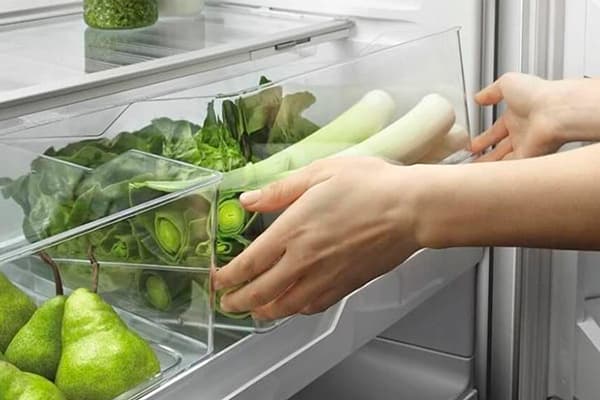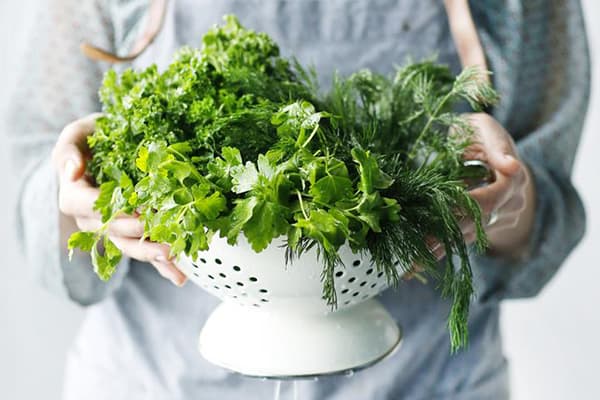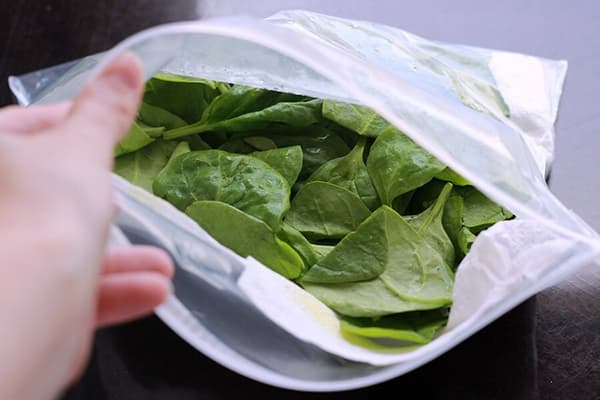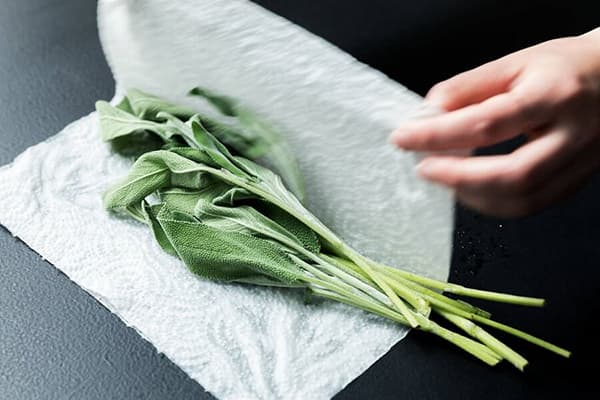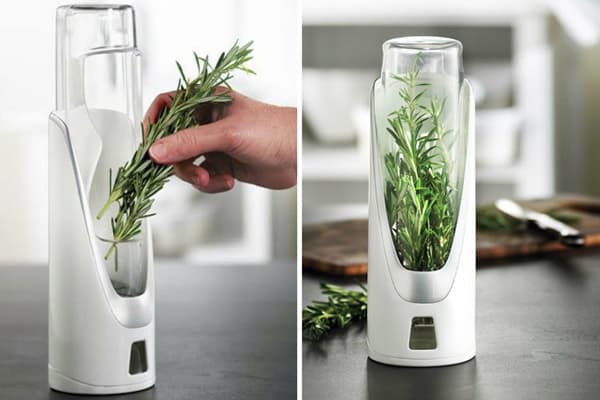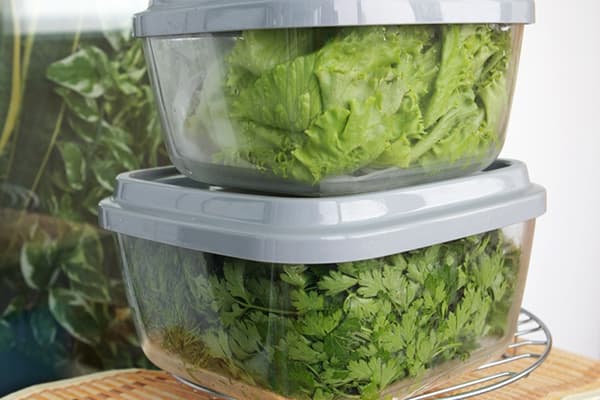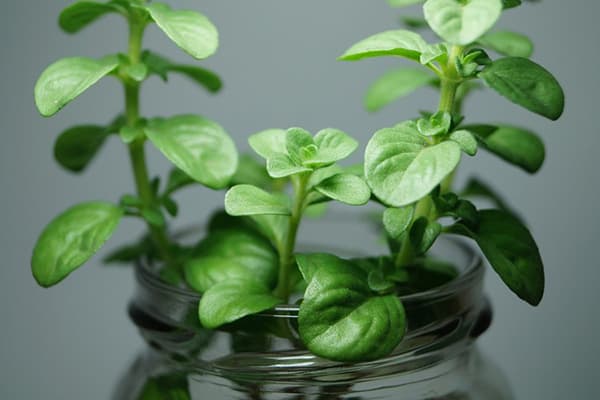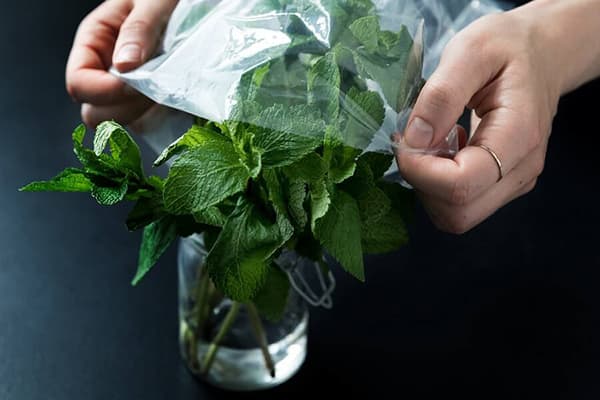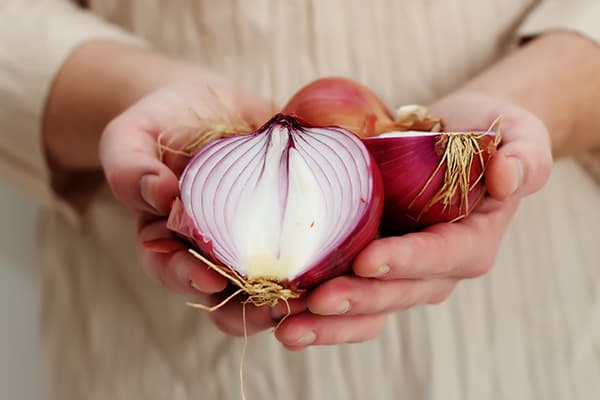How to keep fresh greens in the fridge for a long time: 8 easy ways
Content:
Not every housewife knows how to store greens in the refrigerator. For many, in just 1-2 days, the herbs dry out or wither, or even become covered with mucus. They not only become tasteless, but also lose almost 100% of useful substances. It is good when there is a garden nearby where you can pick up another bunch of fresh dill, parsley or green onions. And if not? Then it remains only to apply the methods of long-term storage of greens - and we will describe them in detail.
Storage conditions
Greens, especially onions and salad-spinach species (green onions, spinach, cilantro, sorrel, watercress) have large cells and a large surface of evaporation of moisture. That is, it is prone to rapid drying. However, with an excess of moisture on the leaves, bacteria begin to multiply actively, mold appears. As a result, the herbs fade, get an unpleasant odor, become covered with mucus.
He does not like greens and the sun. UV rays destroy chlorophyll: leaves turn yellow, lose their aroma. Just for this reason, parsley, dill, basil and other spices are usually dried not in the sun, but in a dark, well-ventilated room.
Due to an excess of oxygen, tender plants actively "breathe", emit heat and carbon dioxide. From this, the leaves curl, and their color becomes dark (brown or brown). And again, the greens are unusable.
The optimal conditions for keeping the product fresh in the refrigerator are shown in the table below.
Table 1. Storage conditions of greens in the refrigerator
| Criterion | Normal value |
|---|---|
| Oxygen | Complete absence (vacuum) or limited access is desirable |
| Temperature | 0–4 degrees |
| Humidity | 90–95% |
| Accommodation | Lower special compartment for vegetables |
Storage preparation
At this stage, many housewives who want to keep the greens fresh make a mistake: wash it. However, this should be done immediately before using the product. If you wash the plants immediately, you can break their fragile structure and damage some of the cells. This will only reduce the shelf life.
How to prepare greens for storage correctly? We offer the following actions:
- If drops of water have accumulated on the leaves, gently shake them and let dry. But do not leave in the sun.
- Remove excess dirt with a paper towel.
- Sort the herbs. Throw away the dried, rotted and blackened parts. Cut the roots, but leave the stems.
Greens, especially tender ones (lettuce, spinach, sorrel, cilantro) should be deposited as soon as possible. After 2 hours after collection, vitamin C begins to break down. Most likely, it no longer exists in the store product, but vitamins of group B, E, K, and minerals are present. You can save them if you hide the herbs in the refrigerator for 1-2 hours after purchase.
Save methods
There are many popular ways to preserve green onions, dill, parsley, cilantro, basil and other herbs for a long time. Consider each of them, analyze the pros and cons.
Plastic bag
A plastic bag protects plants from excess oxygen and maintains an optimal level of humidity (90–95%). At the same time, it costs a penny or even gets the mistress for free. The main disadvantage of such a package is that in it the greens remain fresh no longer than 5-7 days.
Pack one small or medium bundle in each bag.Do not mix different types of greens. Inflate the bags and tie them tightly.
Paper towels
Perhaps the most ineffective way to keep greens fresh, but for some reason very popular with housewives. Extends the shelf life of the product up to 3-5 days.
Wrap a small bunch of herbs in a paper towel, forming a “sausage”. Sprinkle it lightly with spray water. This will protect the plants from drying out.
Please note that newsprint is not suitable for storing greens in the refrigerator. There are traces of printing ink with harmful substances that can penetrate into products.
Vacuum container
For long-term storage of greens in a refrigerator, a vacuum container equipped with a pump for pumping air is most suitable. Since oxygen does not penetrate the package, herbs are not exposed to bacteria and germs. In addition, inside the container, the greens almost do not evaporate and retain moisture.
In vacuum, the shelf life of green onions is 1 month, other types of herbs - 2-3 weeks.
When choosing a vacuum container in a hardware store, try not to save. Buy products from reliable companies:
- Steba,
- Status
Cheap items may be defective and leak air.
It is desirable that the material of the container be polypropylene. It is mechanically strong and resistant to any temperature, including negative. But a material such as polycarbonate may contain bisphenol A, a toxic substance that has carcinogen properties and has a bad effect on the hormonal system.
So you bought a vacuum container. Rinse it thoroughly from the inside, wipe it with a clean towel and dry it. Then fill the volume with greens by 2/3. Tufts of grass should lie free. Close the lid, pump out air and store the workpiece in the refrigerator.
Regular plastic container
The rules for packing greens in a regular container are the same as in a vacuum container. Only the shelf life will be a maximum of 10-12 days, since part of the oxygen will penetrate into the package. But this is still more than when using plastic bags or paper towels.
Glass jar
Glass is an environmentally friendly material, unlike many types of plastic. An ordinary jar allows you to keep greens fresh for up to 10-14 days. Before use, the container must be thoroughly washed and dried.
Take cans up to 1–1.5 liters, laying in each 2-3 small bundles of herbs. Then close tightly with plastic covers. During storage, check for condensation on the walls. If this happens, remove excess moisture with a cloth.
Water tank
There are three “tenacious” types of greens - parsley, chives and dill. These spices contain a lot of essential oils and phytoncides, so they do not spoil for a long time from the effects of microorganisms.
To extend the life of plants up to 1 week, follow these steps:
- cut off the ends of the stems;
- pour cold water into a glass container;
- lower the herbs into the container with the stems down, like a bouquet of flowers;
- cover the top leaves with a plastic bag or wrap with wet gauze;
- put the greens in the refrigerator.
Water should be changed every 2 days. Before using herbs, cut the stems and rinse the leaves under running water.
Use of onions
A non-standard way to preserve the freshness of greens extends the shelf life of the product up to 2 weeks by inhibiting the vital activity of bacteria. Unfortunately, herbs acquire a characteristic onion flavor.
It is better to take red onions for storing greens, which contains more volatile than other species.
Pack herbs in a plastic bag. Onion, without removing the peel, cut into 4 parts, put on the greens. Tie the bags. 2 times a week, herbs should be transferred to a dry bag and replaced with fresh onions.
Freezer
The freezer allows you to keep greens fresh for a very long time - up to 12 months.But, unfortunately, it leads to a loss of 40-50% of taste. Most vitamins (except vitamin C) are retained.
Freezing is the only storage method before which greens need to be washed.
To freeze the product correctly, follow these steps:
- Pour warm water into the basin.
- Soak the greens for 2-3 minutes. Then wash it gently.
- Rinse under running water.
- Shake the leaves to remove excess drops.
- Put herbs on a paper towel in one layer. Let dry naturally.
- Wrap dry bundles of greenery in cling film, foil or parchment paper in the shape of a “sausage”.
- Send to the freezer.
Greens can be frozen not only in bunches, but also in the form of slicing. And after defrosting, use as an additive to meat and fish, soups, pastries, salads. Grind clean herbs with a knife, scissors or in a blender. Pour the cut into a bag (preferably vacuum or with a clasp), tie and send to the freezer. If you use a regular plastic bag, then try to let the air out of it as much as possible.
You can also freeze greens in ice cubes and then throw them in soups. To do this, fill the silicone molds with green slices for 2/3 of the volume, fill with cold boiled water and send to the freezer.
Do not store herbs in the same compartment as meat and fish.
Thus, to preserve the freshness of greenery, three main rules must be observed: protect it from oxygen, maintain optimal humidity, and use packaging. You can’t put washed herbs in the refrigerator, but you can. The most effective storage method is a vacuum container, and long-term - freezing. Now you no longer have to add wilted greens to your dishes or throw away a spoiled product.
